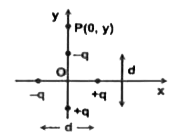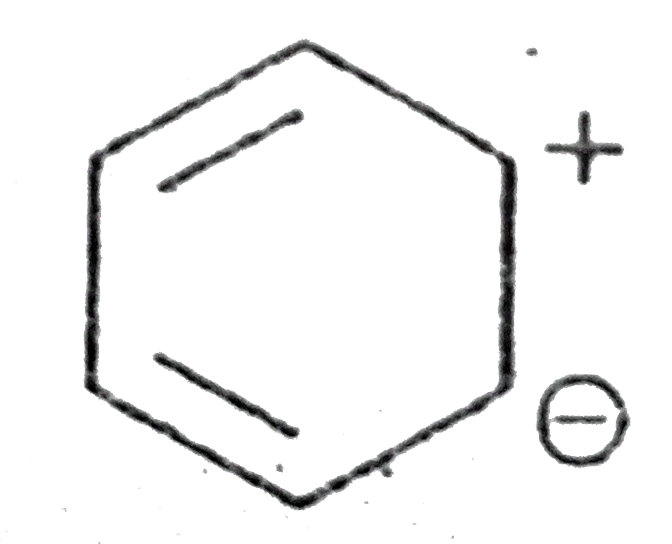A paisa coin is made up Al.Mg alloy and weighs 0.75 g. It has a square shape and its diagonal measures 17mm. It is electrically neutral and constants equal amounts of positive and negative charges . Treating the paisa coin made up of only Al, find the magnitude of equal number of positive and negative charges. What conclusion do you draw from this magnitude ?
To solve the problem, we will follow these steps:
Step 1: Calculate the number of aluminum atoms in the paisa coin.
Given:
- Mass of the paisa coin (m) = 0.75 g
- Atomic mass of Aluminum (M) = 26.9815 g/mol
- Avogadro's number (N_A) = 6.022 × 10^23 atoms/mol
Using the formula for the number of atoms (n):
n=mM×NA
Substituting the values:
n=0.75g26.9815g/mol×6.022×1023atoms/mol
Calculating:
n≈0.7526.9815×6.022×1023≈1.6742×1022atoms
Step 2: Determine the total charge from the aluminum atoms.
Each aluminum atom has an atomic number of 13, which means it has 13 protons and 13 electrons. Therefore, the total charge can be calculated as:
Total charge=n×Z×e
Where:
- Z = number of protons (13 for aluminum)
- e = charge of one electron = 1.6×10−19C
Substituting the values:
Total charge=1.6742×1022×13×1.6×10−19
Calculating:
Total charge≈1.6742×1022×20.8×10−19≈3.48×104C
Step 3: Convert the total charge into kiloCoulombs.
Total charge in kiloCoulombs=3.48×1041000≈34.8kC
Conclusion:
The magnitude of the equal number of positive and negative charges in the paisa coin is approximately 34.8 kC. This indicates that ordinary neutral matter contains a very large amount of positive and negative charges, which is significant in understanding the nature of electric charges in materials.
---
Given:
- Mass of the paisa coin (m) = 0.75 g
- Atomic mass of Aluminum (M) = 26.9815 g/mol
- Avogadro's number (N_A) = 6.022 × 10^23 atoms/mol
n=mM×NA
n=0.75g26.9815g/mol×6.022×1023atoms/mol
n≈0.7526.9815×6.022×1023≈1.6742×1022atoms
Each aluminum atom has an atomic number of 13, which means it has 13 protons and 13 electrons. Therefore, the total charge can be calculated as:
Total charge=n×Z×e
Where:
- Z = number of protons (13 for aluminum)
- e = charge of one electron = 1.6×10−19C
Total charge=1.6742×1022×13×1.6×10−19
Total charge≈1.6742×1022×20.8×10−19≈3.48×104C
Total charge in kiloCoulombs=3.48×1041000≈34.8kC
The magnitude of the equal number of positive and negative charges in the paisa coin is approximately 34.8 kC. This indicates that ordinary neutral matter contains a very large amount of positive and negative charges, which is significant in understanding the nature of electric charges in materials.
Topper's Solved these Questions
- ELECTRIC CHARGES AND FIELDBOOK - NCERT EXEMPLAR ENGLISHCHAPTER - ELECTRIC CHARGES AND FIELDEXERCISE - Long Answer Type Question
6 Videos
- ELECTRIC CHARGES AND FIELDBOOK - NCERT EXEMPLAR ENGLISHCHAPTER - ELECTRIC CHARGES AND FIELDEXERCISE - Very short Type Question
6 Videos
- DUAL NATURE OF RADIATION AND MATTERBOOK - NCERT EXEMPLAR ENGLISHCHAPTER - DUAL NATURE OF RADIATION AND MATTEREXERCISE - LONG ANSWER TYPE QUESTION
5 Videos
- ELECTROMAGNETIC INDUCTION BOOK - NCERT EXEMPLAR ENGLISHCHAPTER - ELECTROMAGNETIC INDUCTION EXERCISE - Long
11 Videos
Similar Questions
Knowledge Check
A coin is made up of Al and weighs 0.75 g. It has a square shape and its diagonal measures 17 mm. It is electrically neutral and contains equal amounts of positive and negative charges. The magnitude of these charges is (Atomic mass of Al = 26.98 g)
A3.47×104CB3.47×102CC1.67×1020CD1.67×1022C(A) atom as a whole is electrically neutral.
(R)atom contains equal amount of positive and negative charges.Aif both assertion and reason are true and reason is the correct explanation of assertion.Bif both assertion and reason are true but reason is not the correct explanation of assertion.Cif assertion is true but reason is false.Dif both assertion and reason are false.
How much positive and negative charge is there in a water molecule ?
View SolutionA sol of Agl can be positively or negatively charged. Explain how and why?
View SolutionTwo positive and two negative charges are kept in x-y plane in free space as shown in the figure. The magnitude of electric field due to the system of charges at a point P(0, y) will be (y > > d)

View SolutionFerric chloride forms both positively and negatively charged sols. Explain.
View SolutionIn the given compound, hybridization of the Carbon atom with positive and negative charge are

View SolutionElectric lines of force about negative point charge are
View Solution
